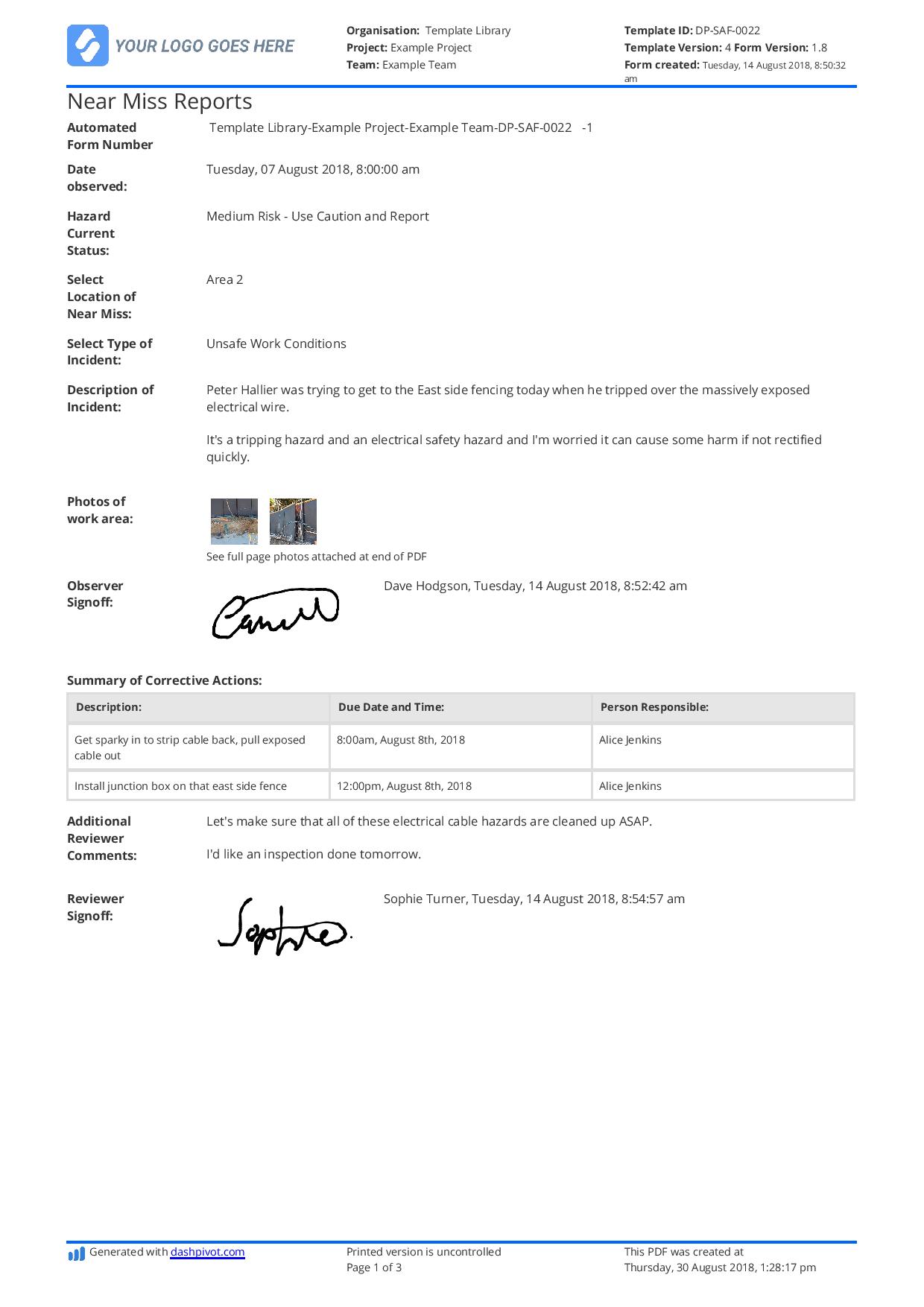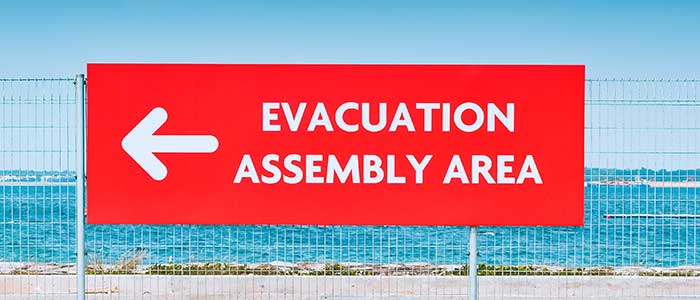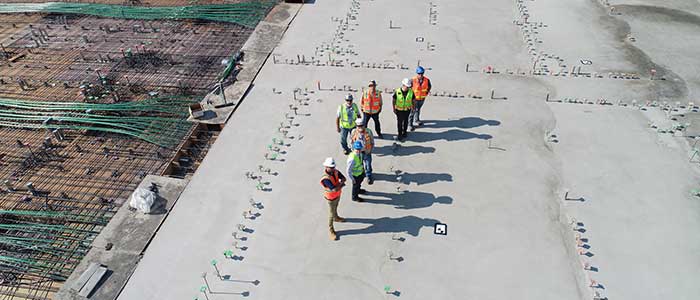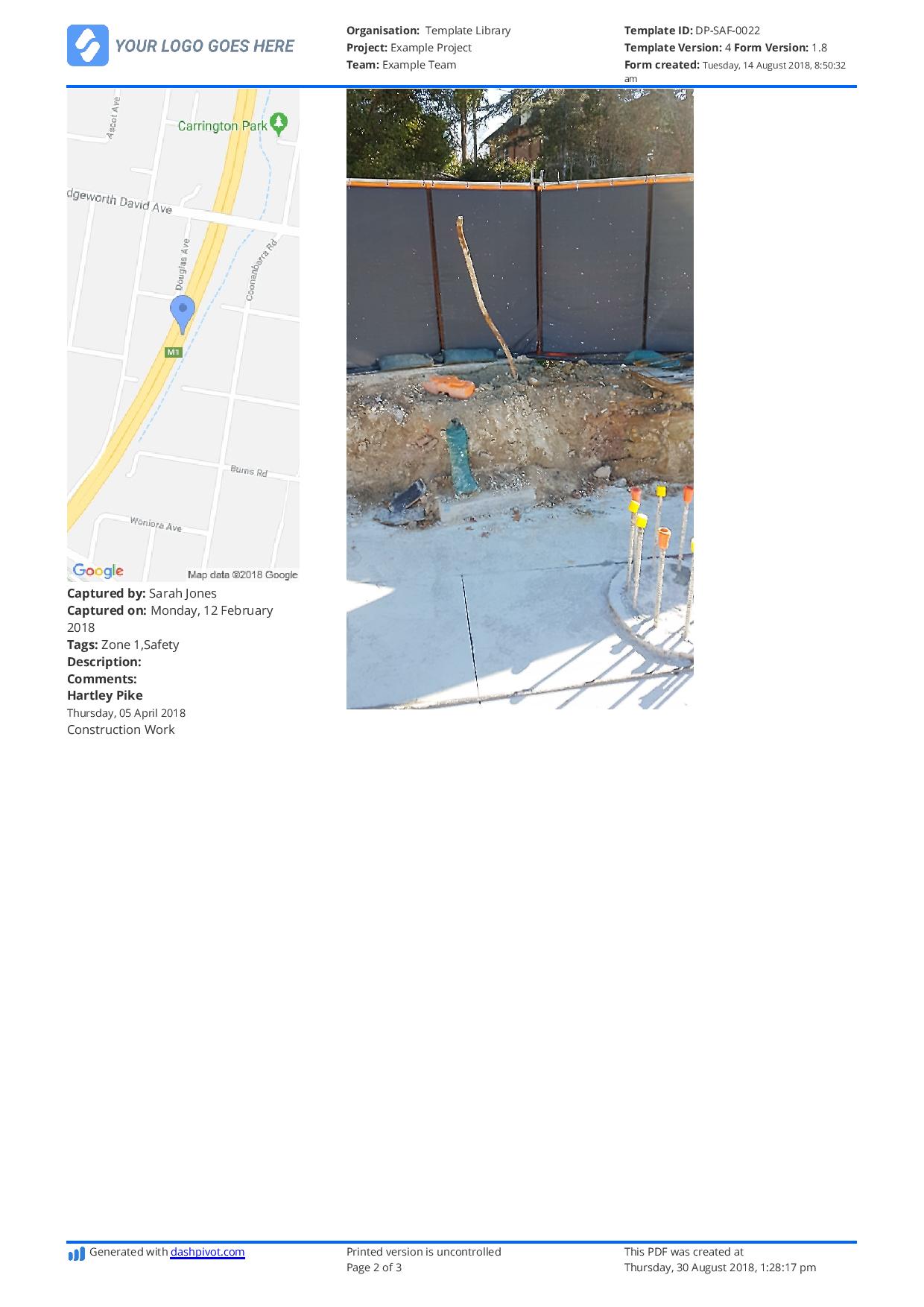Dashpivot article page – Near Miss Reporting example

Near Miss Reporting example
What is a Near Miss Report?
A "near miss report" is a documented record of an incident that, while not resulting in any personal injury or property damage, had the potential to do so.
Essentially, it's a close call that could have been worse under slightly different circumstances.
The primary purpose of documenting these near misses is to identify risks, analyze them, and then take corrective action to prevent actual accidents in the future.
What sections do you need in a Near Miss Report?
When creating a near miss report, it's essential to ensure that the form captures all relevant information that can help in understanding the incident and identifying measures to prevent recurrence. The specific sections required can vary based on industry norms, regulatory requirements, and the company's internal protocols, but here are common sections that are typically included:
- Report Details:
- Report Number: A unique identifier for tracking and referencing.
- Date and Time of Report: When the near miss was reported.
- Reported By: Name and position of the individual reporting the near miss.
- Incident Details:
- Date and Time of Incident: When the near miss occurred.
- Location of Incident: Specific location or department where the incident took place.
- Description of Incident: A detailed account of the near miss, including what happened, the sequence of events leading up to it, and potential factors that contributed.
- Involved Parties:
- List of individuals involved or who witnessed the near miss, along with their contact details and roles or actions during the incident.
- Potential Consequences:
- Description of the worst-case scenario or what could have happened if circumstances had been slightly different.
- Contributing Factors/Causes:
- Root causes or conditions contributing to the near miss. This could be equipment malfunctions, human error, environmental conditions, procedural gaps, etc.
- Immediate Actions Taken:
- Any steps taken immediately after the near miss to ensure safety or mitigate further risks.
- Recommendations/Corrective Actions:
- Suggested measures to prevent a similar incident in the future. This could be procedural changes, additional training, equipment modifications, etc.
- Attachments/Supporting Information:
- Photographs, diagrams, witness statements, or other pertinent information that provides more clarity about the incident.
- Follow-up Actions/Resolution:
- Documentation of what actions have been taken or are planned as a result of the near miss report. This can include changes in procedures, training sessions conducted, or equipment changes.
- Who is responsible for implementing the actions and by when.
- Comments/Feedback:
- Space for reviewers or managers to provide feedback, insights, or additional recommendations based on the report.
- Approval/Review:
- Signatures or acknowledgments from relevant personnel, such as safety officers, managers, or department heads, indicating that they've reviewed the report and are aware of its contents.
- Confidentiality/Privacy Section:
- Some near miss reports might have a section ensuring the confidentiality of the reporter or involved parties, especially in systems where anonymity is encouraged to foster honest reporting.
Remember that the near miss report's primary goal is to gather as much relevant information as possible to understand the incident fully and take steps to ensure that similar incidents are prevented in the future.
See what a Near Miss Reporting example looks like in action below.
Examples of different near miss reports
- Falls and Slips:
- A worker almost slipped off scaffolding due to a slippery surface caused by morning dew.
- While working on a roof, an employee stepped on a weak section, causing it to crack but not break through.
- Dropped Objects:
- A tool was accidentally dropped from height, narrowly missing workers below.
- Materials were being hoisted and the load unexpectedly shifted, nearly dropping the cargo.
- Equipment and Machinery:
- A crane swung its load, nearly hitting workers who were inside its swing radius.
- A power tool was found operating unattended when a worker accidentally locked it in the "on" position and walked away.
- Electrical:
- While drilling into a wall, a worker narrowly missed striking a live electrical wire.
- A portable generator was set up too close to a wet area, posing a potential electrocution risk.
- Trenching and Excavation:
- A trench wall showed signs of imminent collapse when workers were nearby.
- Workers were observed in a trench without the necessary protective systems in place.
- Vehicular Incidents:
- A construction vehicle reversed without using a spotter, almost hitting another worker.
- Two construction vehicles nearly collided at a site intersection due to a lack of clear traffic signage.
- Chemical and Materials Exposure:
- A gas leak was detected in a confined space just before workers were about to enter.
- Workers were mixing chemicals without appropriate PPE, risking potential harmful exposure.
- Structural Failures:
- Temporary shoring showed signs of weakness, risking collapse.
- A newly constructed platform showed unexpected flexing when loaded with materials.
- Fire Hazards:
- A propane torch was left ignited and unattended momentarily, near flammable materials.
- Electrical cords were found frayed and used in a cluttered area with sawdust, posing a fire risk.
- Barriers and Signage:
- An open pit was left unmarked during a lunch break, posing a fall hazard.
- Barricades around a hazardous area were found to be inadequately placed, allowing potential access.
Near Miss Reporting example
Below is an example for Near Miss Reporting that you can follow to create your own Near Miss Report.

Use this Near Miss Report example as a digital Near Miss Reporting template
Digitise your Near Miss Reporting
Instead of using the near miss reporting example to create your reports, use this near miss reporting template so all of your near miss reports are standardised.
All the fields and sections you need are pre-built from the near miss example so your team can quickly and easily record near misses on site with all the information you need.
Attach photos or videos of potential hazards directly to your near miss reports with automatic geotagging, timestamps and photo markup.
Capture reporter signatures as well as safety officer signatures to ensure your near miss report stays compliant.
Build Near Miss Reporting processes to improve safety outcomes
Ensure near miss reporting is carried out properly with all the information you need by using this digital near miss reporting app.
Your team can access your custom near miss report on mobile or tablet, so when a near miss occurs on site, they can access and record a near miss report while on site where all the information is at their fingertips.
Capture signatures via manual eSignatures on mobile or tablet, or use fully contactless signoff.
Share completed near miss reports as professionally formatted CSV or PDF with all the information, photos and signatures.

Hazard Report template
Document and report hazards quickly and thoroughly to keep everyone safe.

Safety Improvement Plan template
Create coherent, actionable and professional safety plans using this proven framework.

Safety Toolbox Talk template
This toolbox talk template is quick and easy to complete and signoff on site, and keeps all of your toolbox talks neatly organised and professional.

